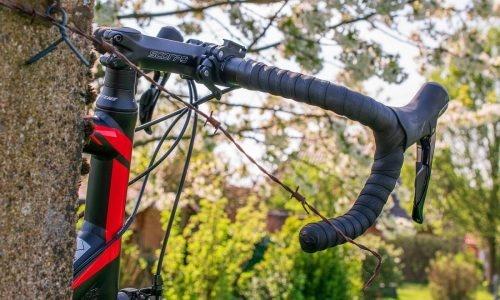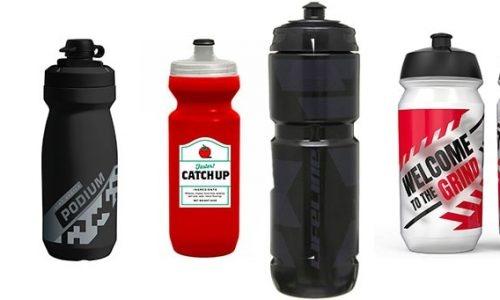Cycling during the winter is a great way to keep your base up and make sure that you aren’t playing catch up in the springtime because your fitness has suffered.
One of the biggest concerns people have with cycling in the winter is staying warm. With the proper clothing, shoes, and gloves, there is no reason that winter cycling can’t be fun, warm, and enjoyable.
Some people might be thinking that they can just get away with warmer socks, and some toe covers, and ride all winter.
If you are particularly tough or find yourself going only on shorter rides 30 minutes or less, this might be something you can get away with.
But for those of us who want to go on longer rides just like you did during more seasonable weather, this is not going to keep your toes very warm, and your ride will not be very fun.
If you aren’t having fun, and are physically uncomfortable during your ride, you are going to not want to train as often or as much during the winter, and you are going to lose that base that you worked so hard over the last year to gain and maintain.
Proper winter cycling shoes are going to be an important investment that you make in order to keep your feet warm and make sure that your rides are enjoyable.
Top 4 Winter Cycling Shoes
Let’s start the article off with a few recommendations, and then after we discuss our favorite winter cycling shoes we will take a deeper dive into what you should be looking for when you find yourself in the market for a pair.
Fizik R5 Artica

The first shoe we are going to look at is the Fizik R5 Artica. The shoe can be purchased on Amazon by following this link.
It costs around $175 but will last you for many seasons due to its high-quality construction. The R5 Artica is a waterproof cycling shoe that looks like a boot and is going to be great for road riders who want to stay warm, comfortable, and put in some miles when the temperature dips below freezing.
They feature a fleece interior which will help keep your toes warm when the wind picks up, and they also have a layer of foil in the material to help reflect heat back towards your feet.
These features make it an excellent winter cycling shoe for long hours in the saddle. The shoe has carbon-reinforced soles and is compatible with standard road cleats.
If you plan on just riding roads this winter, this shoe would be a great choice for you, but due to its incompatibility with mountain bike pedal cleats and lack of tread on the sole, it would not be a good choice for somebody who is looking to ride off-road with their fat tire bike or a cyclocross bike.
Lake Cycling MXZ303 Cyling Boot

The second shoe we are going to take a look at is from Lake Cycling. This winter cycling boot is definitely going to be more geared towards somebody riding off-road in cold temperatures, or somebody doing fat tire bike racing.
It can be purchased on Amazon by following this link. The MXZ303 feature a Vibram sole that has some aggressive tread for traction when you are off the bike and in the snow.
It is compatible with your standard mountain bike pedal cleats, and so road riders are going to want to shy away from this one.
The outer material on this boot is leather, and on the inside, it has 3M Thinsulate lining which will certainly keep your feet warm during a ride.
The boots also have a reflective liner in them to reflect heat that would be escaping from your feet back to your body, which plays a major role in keeping you warmer and is one of the key differences between winter cycling shoes and regular cycling shoes.
Exustar SM3103 Winter 40 MTB

If the last two options seemed a little too spendy for you, then an option that you should be considering is the Exustar SM3103 Winter 40 MTB shoe.
This shoe sells for less than $100, which is much more affordable than the last two options, and can be purchased here.
The Exustar SM3103 is compatible with your standard mountain bike pedal cleats, and also has some decent tread on the bottom for traction when you are walking through snow or slush.
The inside of the shoe features 3M Thinsulate insulation, which will do a good job at keeping your feet warmer for longer amounts of time than a standard cycling shoe.
The outside of this shoe is not specifically windproof or waterproof, so for longer rides, you might find that this shoe gets colder a little more quickly than some of our other recommendations.
If you are the type of rider who is unsure whether you want to commit to winter riding, and just want to give it a try then this would be a great shoe to start out with until you are sure that you would get enough use from a pair of more dedicated and expensive winter shoes.
It also would make a great shoe for the bike commuter who doesn’t want to stop riding to work or to the store just because it is winter, but otherwise won’t be out in the saddle putting in miles for hours at a time.
Lake MXZ200

One other option that we would recommend is the Lake MXZ200 shoe. They can be purchased from Amazon by following this link.
What makes these shoes stand out is the fact that they don’t scream “cycling shoe”.
With their classic look thanks to the leather outer and laces, they look closer to a hiking boot than a cycling shoe.
This would be a great shoe for the commuter who doesn’t necessarily want to be carrying around multiple pairs of shoes with them everywhere they go.
The MXZ200 has a Vibram sole which will provide traction when you are off the bike thanks to its generous tread. They are compatible with your standard mountain bike pedals.
They are lined with a waterproof membrane to make sure that as you ride, and slush splashes upon you, that your feet stay nice and dry.
These boots also feature 3M Thinsulate material to keep your feet warm on cold commutes.
Because they do not look like cycling shoes and are not quite as stiff as some of the other more dedicated winter cycling shoes out there you can wear these around all day and not look out of place.
Not to mention the fact that they will be more comfortable off the bike due to their less aggressive design; they will allow your feet to move more naturally off the bike while still allowing for excellent power transfer to the pedals while you are on the bike.
What Makes a Good Winter Cycling Shoe
Now that we have mentioned some of our top picks, let’s break down what you should be looking for in a winter cycling shoe/boot so you understand why we recommended what we did.
Ankle Protection
The first thing you are going to want to make sure that your winter cycling shoe feature is some sort of ankle protection.
This isn’t protection from rocks or sticks, but rather protection from any slush, snow, or water that might get kicked up during your ride.
Most winter-specific cycling shoes feature some sort of neoprene ankle wrap that goes around your ankle and secures with Velcro in order to provide a tight and waterproof fit.
Guarding the main entrance to the shoe is one of the most important since that’s where quite a bit of water or slush can enter, and once it has gotten in your feet are going to get wet and then they are going to get cold.
All of the recommended options except for the Lake MXZ200 feature an elastic or neoprene cuff to make sure that your ankles, feet, and shoe stay dry when you are out in the elements.
Warm lining
The next thing you are going to want to make sure your shoes have is a warm lining. As you likely noticed, all of the shoes we recommended feature a fleece lining, or 3M Thinsulate, which is basically 3M’s version of fleece.
Fleece is a great insulator and really will make a big difference in how comfortable your feet are during a ride.
If your ride is only going to be 25 or 30 minutes you could probably get away with unlined shoes, but anything longer than that and you is really going to start to notice how cold your feet are getting.
Waterproofing
Going off of the insulation, you are also going to want to make sure that your winter cycling shoes have some sort of waterproofing, be it in the form of a waterproof liner built-in, or a waterproof material on the outside of the shoe.
Winter cycling is cold, and it is wet. We have already taken care of the warmth aspect by making sure that our shoes have a warm lining, but we also need to make sure that they are not going to let our feet get wet.
Once your feet get wet, it is pretty much going to be game-over; it is going to be hard to keep your feet warm and comfortable for the remainder of the ride.
Wearing socks made out of wool can help because wool will stay warm even after it has gotten wet, but when the weather is below freezing that will not be enough and you will start to get numb feet pretty quickly.
Shoe Sole Tread
One final thing that most riders are going to want is some good tread on the sole of the shoe. Unless you are strictly road riding for training purposes only and don’t plan on getting off the bike until the ride is done you are going to want a little traction.
Winter brings snow and ice, and neither are very good matches with a smooth-soled road shoe. That is why three of our four recommendations feature aggressive tread.
Whether you are doing a little racing on a fat tire bike, commuting to the store or to your job, or just like to get out and have some fun on your bike, most of us are going to need to get off at some point or perhaps even walk with your bike, and so you will be happy that you chose to get a winter cycling shoe that has some traction when you are walking on snow and ice.
One side note is that three of the four shoes we recommended are for mountain bike pedals. You might normally ride with road pedals, but in the wintertime, this is not the best idea, and you should consider swapping over to some mountain style pedals during the winter.
This is because of the slush, sand, and salt that are found just about everywhere during winter. Mountain bike pedals are designed to get dirty and to get grit in all the joints and still function properly, whereas your standard road pedals are going to be a lot more finicky with sand and salt residue getting into their inner workings.
Our suggestion would be to consider swapping to a mountain pedal for the wintertime on your bike, and then you can always swap back when springtime comes and brings some nicer weather.
Conclusion
Hopefully, you found this article to be informative and helpful. We broke down some excellent choices for your first pair of winter cycling shoes, which should get you started off in the right direction.
We also discussed what makes a good winter cycling shoe and what you should look for when purchasing some.
Winter cycling can be fun when you have the right gear, so go out there, get geared up, and have some fun on two wheels!

Jake V is an avid cyclist from Wisconsin. Over the last 12 years, he has explored the worlds of road biking, mountain biking, cyclocross, and urban riding. He currently has too many bikes (if that is even possible), but his favorite would be his Colnago EPS or Cinelli Tutto, depending on what kind of riding is in store for him that day. When he is not riding bikes, he likes to go sailing, skiing, and enjoy a few craft beers.




